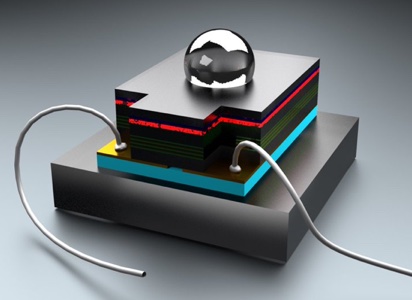Semiconductor quantum dots are nanoscale structures which create a highly confined trap for individual charge carriers. The quantum dots we investigate self-assemble during epitaxy due to strain between two lattice mismatched semiconductors with different bandgaps, e.g. Indium Arsenide (InAs) and Gallium Arsenide (GaAs). Because of the combined effects of strain and band structure alignment between InAs and GaAs in both the conduction band and valence band, a 3D version of a particle in a box emerges for both electrons and holes. As InAs and GaAs are direct bandgap semiconductors, the confinement of both electrons and holes results in narrow, well-defined yet fast optical transitions, with the lifetimes of an individual exciton (bound electron-hole pair) on the order of 1 ns. III-V quantum dots therefore make nearly ideal single photon sources. Individual electron or hole spin states can also be used to encode quantum information and the bright optical transitions can be utilised for fast, all-optical manipulation and read-out. Due to the ease of incorporating heterostructure functionality (to enable deterministic charge control and electrical tuning of the optical properties) and monolithic photonic devices (for increased light-matter interaction efficiency), quantum dots have much to offer future quantum technologies.

Using quantum dots, we address the following challenges:
- What are the fundamental limits to coherence in a quantum dot? Can we engineer the spin / exciton coherence – or at least mitigate the most relevant dephasing mechanisms?
- How perfect can a source of on-demand indistinguishable single photons be? How many sequential photons from a single quantum dot can exhibit indistinguishability? How efficiently can we collect and detect the photons?
- The highest quality InAs/GaAs self-assembled quantum dots emit typically between 900 and 1000 nm. By either changing the physical properties of the dot (e.g. its size, strain, or composition) or by using frequency down-conversion techniques, can we generate high quality single photons at telecom wavelengths? Can the spin-photon link and coherence be preserved at telecom wavelengths?
- How can we exploit quantum dot single photon sources in quantum optics experiments? Can we interface the single photons with disparate systems for hybrid approaches in quantum science?
